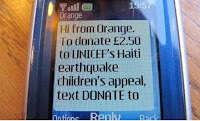By Vishal Talreja
One of the trustees of a children’s shelter home in India was able to get a rock bank to perform for free, so the home decided to host a rock concert. The shelter had to organise the event and cover related costs, which they were initially confident they could get through sponsorship. However, a week before the scheduled date of the concert, no sponsorship had been found and the costs were eating into their reserves. Furthermore, they had only sold 500 of the targeted 3000 tickets. They were in a difficult position; they could not afford to spend any more money on marketing, yet their only hope was to sell more tickets to recover costs. In the end, this charity made a loss of USD 6500 on the event and pledged never again to organise a fundraising event.
What went wrong? Was it just bad luck or could they have avoided this loss?
Without a doubt, event fundraising can be either one of the most effective, sure-fire ways to raise funds for your organisation, or it can be a nightmare-like experience plagued with low numbers and a lack of sponsorship. Fundraising events are a double-edged sword and many a charity has fallen into the trap of planning an elaborate event before they are ready or have all the necessary competencies in place in order to guarantee its success.
Over the past 11 years, I have conducted some successful and some not-so-successful fundraising events for small charities and have come up with seven lessons to help you avoid the mistakes that I made.
Lesson one: is your organisation ready for event fundraising?
Not all charities are capable of planning and hosting an event. The children’s shelter mentioned above is a classic example of this. Access to a celebrity or a rock band is never reason enough to jump into an event unless you have right staff, the capital to make an investment, the network to attract sponsorship and the necessary marketing muscle to sell the event.
Lesson two: recognise and play to your strengths
Yes, it was a strength that the trustee of the children’s shelter had access to a rock band, but that was the only one. It is important to recognise what your strengths are and then plan an event around them. For a truly successful event, a charity may require multiple assets and resources. Don’t be put off if you don’t have them all right away, they can be built up over time.
Lesson three: collaborate
The best way to make up for a lack of resources or assets is to collaborate. If organising an event, finding sponsorship, or selling tickets aren’t your strong points then you could perhaps involve an event management company. While it does reduce the net proceeds, it will increase your chances of success and you will learn from the professionals, so that next time maybe you could try it on your own. You could also try collaborating with another charity with complementary strengths to your own. Or you could ask a corporate partner to buy the event exclusively for their staff. The important thing is to know what you are least good at and find a partner to fill the gap.
Lesson four: look for opportunities in your environment
There are event opportunities all around us. The most successful places where I have found a new opportunity are in the newspapers or on the radio. The opening of a new restaurant, a new shopping mall, a new product launch, a new company, a new store, an existing restaurant running a theme night, festival time, or a celebrity coming to town are all opportunities that could be converted into potential fundraising events. For example, a new restaurant might be persuaded to donate the proceeds of the first night or the first week to your charity if you are able to sell tables to your supporters and networks.
Lesson five: exploit existing opportunities
I believe that charities should never organise their own events unless they are building an idea that can be run for at least three to five years. For years, a large Indian charity has been hosting a corporate quiz night that has become very successful. However, it took them a long time to build the brand around the event. For smaller nonprofits, it is often easier and more successful to use existing platforms and exploit opportunities that are already there, the most successful being marathons, concerts, plays, or musicals.
Lesson six: create win-win propositions
Fundraising events are often not so much about supporting a cause as about creating a ‘wow’ experience for guests. If you are organising a rock concert, the main motivation for the majority of ticket buyers is the music. It is important to make sure they have a good time. Similarly the main motivation behind the participation of the rock band is probably the chance to play their music in front of 3000 fans, rather than your cause. Therefore, it is important to create a win-win event for everyone involved.
Lesson seven: know when to phase out
Most events have a life cycle and it’s important to recognise when the event has peaked and it is time to phase it out. It can either be stopped altogether, or it could be revamped or repackaged to suit new audiences. It is important to phase an event out before your target guests or audience feel tired of it – this will end up with a loss of revenue and a loss of good will, which may affect future events.
I’m sure there are many more mistakes that I could mention but I will finish here. Events can be a great source of funding for charities and they can be a lot of fun to organise and participate in. Choose them wisely to have more chance of success.
Happy fundraising!



